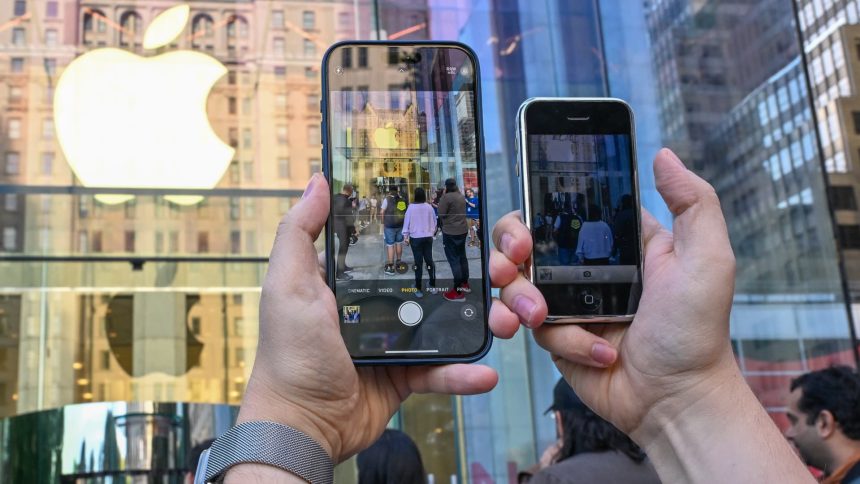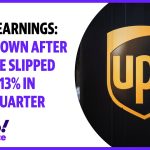You think and think and think, and you still can’t believe that things changed so radically in such a short period of time. You can’t believe that people were actually willing to pay 26 times earnings for a cellphone company like Apple (AAPL). You find it hard to believe that Amazon (AMZN), under attack from the U.S. Federal Trade Commission, just keeps powering higher, despite the ‘weakening consumer.’ Meta Platforms (META) manages to lose even more money on some quixotic effort that seems to make no sense and all of a sudden we look away? Alphabet (GOOGL) disappoints in the cloud, and doesn’t even break out how its most important YouTube initiative in years — the NFL Sunday ticket — is doing, and nobody cares? What the heck is going on? I have spent a lot of time thinking about this counter-intuitive rise in the stock market over the last two weeks. And I realized that you basically have to throw out any factors about individual stocks that might have been holding them back. So, let’s pull apart Apple, Amazon, Meta and Alphabet to try to understand how unimportant what actually happened at these companies might be. AAPL 1M mountain Apple (AAPL) one-month performance. When you go over the timeline of Apple you will notice a particular piece of research — a KeyBanc report from early October that downgraded Apple stock to a hold-equivalent rating from buy on concerns over iPhone sales. The piece stands out because the analyst looked at everything everyone else did — including the lack of growth, the plateauing of wearables, the decline in Macs and iPads, and the lack of a new killer phone — and decided that it’s time just to admit the emperor of this market has been naked long enough. As shocking as it was to see a downgrade, it crystalized what everyone was thinking. Sure, I know I rushed to differ. I didn’t focus on the hardware. I was looking at the services revenue and figured it would soon be equal to all of the disparate adjacencies to cellphones — the Mac, the iPad, the wearables. I measured the lifetime value of a new Apple ‘subscriber’ from the Philippines or Indonesia or Brazil or Vietnam and decided that the amalgamated sub growth from all of these new countries hitting all-time sales highs could offset the weakness in China. And why not? The stock had run into the print, erasing the decline the KeyBanc downgrade had caused. When the numbers came out, they were pretty much exactly as KeyBanc expected. So, logically, the stock should have headed right back down. That is, if logic were involved. Instead, Apple stock has climbed roughly 5% since it reported quarterly results on Nov. 2. AMZN 1M mountain Amazon (AMZN) one-month performance. Now consider the case of Amazon. The media adores FTC Chair Lina Khan’s suit targeting Amazon because our country doesn’t like big, powerful companies. It doesn’t matter if Amazon is fabulous for the consumer and Prime’s an amazing deal, what matters is there must be someone aggrieved by this, so let’s go after Amazon to protect sellers who might have been able to sell products for more money if Amazon didn’t exist. It doesn’t matter that they might sell 10 times more with Amazon. Somehow it’s the profit per item that seems to matter to Khan, even if the ultimate amount the seller makes from Amazon far exceeds what it might make otherwise. It’s a uniquely incorrect way to look at things when it comes to economics, but when it comes to populism I give her an A + on her paper. But toss the media’s love affair aside. The fact is that when Amazon reported there was nothing that stood out when it came to retail. Nothing. Nor when it came to advertising. The only thing that mattered was that cloud unit Amazon Web Services put up a number that showed a stabilization in growth, albeit at a relatively low level. But after initially getting hit, the stock did manage to stage a rally — climbing roughly 20% since reporting earnings in late October. META 1M mountain Meta Platforms (META) one-month performance. Meanwhile, Meta’s quarter was curious , to say the least. You got good Instagram results, but horrendous losses in the so-called metaverse. For no fathomable reason. And then out of nowhere the company announced that there had been a pause in consumer packaged goods sales because of the Israel-Gaza war. Of course the sellers went nuts with that. Meta stock fell to $288 a share, down from $314, in a couple of sessions just because of that line in its earnings report. But like Apple and Amazon, Meta stock stabilized and has risen more than 14% since late October. GOOGL 1M mountain Alphabet (GOOGL) one-month performance. Alphabet put up extraordinarily good numbers this earnings season, except from the division that was supposed to be the new leader and the next leg up: Google Cloud. Depending upon which bull you read, Google Cloud was supposed to make somewhere between $8.5 billion and $8.75 billion and, instead it came in at $8.41 billion, the slowest growth since the first quarter of 2021. Didn’t matter — at least to the sellers — that the unit made $266 million after losing $440 million last year. All other metrics that Alphabet delivered were overshadowed by that one small piece of the Alphabet puzzle. Had they explained that YouTube was turbo-charged by the NFL Sunday ticket it might have overshadowed the disappointing cloud number. Even so, Alphabet stock also staged a recovery, gaining more than 8% since late October. Now, let’s consider the obvious. There was nothing in any of these reports, nothing, that was a clear upside surprise. Not one of these companies gave you a forecast boost. Sure, you saw a pause in the growth decline at Amazon Web Services. But Apple was slightly worse around the margins. The sudden advertising slowdown at Meta certainly gave you a scare. Managements at Apple and Alphabet seem content to give you nothing to make you feel the next quarter, or two or even three, would be better. They might be worse! And yet what has happened since those reports? Where have those stocks traveled to? These moves, these monumental moves, are only about one thing: the potential peak in the bond market’s hideous slide in price and increase in yield. All that research, all of those line items and predictions and judgments versus models meant almost nothing. None of these companies had a true step function higher, an actual beat and magnificent raise like you got from Microsoft (MSFT). Yet they all went up fairly similarly because of Treasury yields. I know I got lucky in my thinking. My mantra is to own Apple not to trade it, which is as much a denigration of those who opine and endlessly trade on it as it is something that measures the greatness of this consumer-tech company. Whatever. I offer thanks to the bond market for making me look smarter than I am. The fact is a stabilization in rates caused these moves. We don’t know if yields stabilized because the inflation inputs are now going in the right direction. We don’t know if the Federal Reserve may be finished with interest-rate hikes. Let’s just say the economic data coalesced with a Fed that didn’t raise rates this month and a Treasury that put out a smart bond0-issuance schedule, to put in a short-term peak in yields. That’s what happened. Nothing more, nothing less. These last two weeks have been a bit of a comeuppance to all of us who still think that how companies do really matters to their valuations. But I don’t want to stop doing homework because of what happened. Nor do I think that the homework revealed a reason to bail. These companies are making huge amounts of money. They are the best we have. I believe you have to overlook the bond market and stay in them. You didn’t just get lucky. Which brings me full circle. Sometimes what matters more than being in the right stocks is to not be shaken out of stocks entirely. If you go back to that KeyBanc buy-to-hold of Apple, all that analyst did was acknowledge the current wisdom that Apple’s not a growth company anymore. If you found another way to value Apple, as I have, measuring it as a tech consumer company that competes with Procter & Gamble (PG) for price-to-earnings prominence, then you managed to stay in the stock and benefit from the change in the bond market’s fortunes. Oh, the cynic might say: but what if rates had kept climbing? My answer: they didn’t. The cynics lost, the optimists won. It was, like they say in the NFL, an ugly W, but it was a W nonetheless. And that’s all that matters. (Jim Cramer’s Charitable Trust is long AAPL, AMZN, META, GOOGL, MSFT, PG. See here for a full list of the stocks.) As a subscriber to the CNBC Investing Club with Jim Cramer, you will receive a trade alert before Jim makes a trade. Jim waits 45 minutes after sending a trade alert before buying or selling a stock in his charitable trust’s portfolio. If Jim has talked about a stock on CNBC TV, he waits 72 hours after issuing the trade alert before executing the trade. THE ABOVE INVESTING CLUB INFORMATION IS SUBJECT TO OUR TERMS AND CONDITIONS AND PRIVACY POLICY , TOGETHER WITH OUR DISCLAIMER . NO FIDUCIARY OBLIGATION OR DUTY EXISTS, OR IS CREATED, BY VIRTUE OF YOUR RECEIPT OF ANY INFORMATION PROVIDED IN CONNECTION WITH THE INVESTING CLUB. NO SPECIFIC OUTCOME OR PROFIT IS GUARANTEED.
You think and think and think, and you still can’t believe that things changed so radically in such a short period of time.
Read the full article here
News Room




